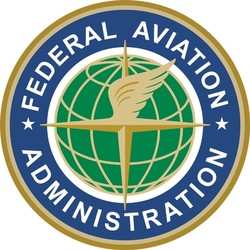Fri, Jan 23, 2015
The Two Often Occur In The Same Airspace At The Beach
The FAA has issued a SAFO (Safety Alert For Operators) highlighting regulations, guidance, and best practices for safe aircraft banner tow operations in the vicinity of parasail operations.

Two recent midair collisions between banner tow aircraft and parasail rigs in flight could have resulted in injury or death. In addition, on June 18, 2014, the National Transportation Safety Board published Special Investigation Report (SIR), Parasailing Safety (NTSB/SIR-14/02 PB2014-106341) that chronicled the history of banner tow aircraft and parasail collisions. The SIR recommended that the FAA take appropriate action in coordination with the United States Coast Guard (USCG) to reduce associated hazards.
The FAA and USCG share responsibility in mitigating the risk of collision between parasails and banner tow aircraft. In certain locations, these operations may occur within close proximity along populated beach areas. The FAA regulates both banner tow and parasail flight operations. Title 14 of the Code of Federal Regulations (14 CFR) part 91, § 91.311 provides for the issuance of a certificate of waiver for aircraft banner tow operations. Parasails and parasail operations are subject to regulations applicable to kites under 14 CFR part 101 and may not be operated in a manner that creates a hazard. The USCG regulates the operation and safety of water borne vessels that conduct parasail operations on federally navigable waterways.
The USCG and FAA strongly encourage communication and cooperation amongst parasail and banner tow operators in areas where these operations occur in close proximity.
The FAA recommends that Banner tow operators should adhere to the following guidelines and comply with applicable regulations in 14 CFR:
- All banner tow operations require an FAA certificate of waiver to operate. A banner tow operator must comply with the terms and conditions of the certificate of waiver including minimum altitudes or other restrictions exceeding the regulatory standards in 14 CFR.
- Before issuance of a certificate of waiver, an FAA safety inspector must ensure the pilot is competent to perform banner tow operations. At least one pickup and drop of the largest banner (i.e. the maximum number of letters/panels) to be used by the operator must be demonstrated. Operators must not tow banners larger than demonstrated to the FAA.
- Banner tow flights may operate in Visual Flight Rules (VFR) conditions only. VFR operations require pilots to ‘SEE and AVOID’ other aircraft, reference § 91.113.
- Banner tow aircraft (and the banner) must not be operated closer than 500 feet from any person, vessel (including a parasail held aloft), vehicle, or structure when operating over other than congested areas, reference § 91.119(c).
- No person may operate an aircraft in a careless or reckless manner so as to endanger the life or property of another.
- Parasail vessels typically operate at speeds of 10 knots or less and are engaged in flying passengers aloft maximizing wind direction to ensure safe passenger flight. Their ability to maneuver is limited by both their slow speed and prevailing wind direction.
- Before high activity seasons, banner tow and parasailing operators within a common geographic area are encouraged to coordinate regular safety meetings and/or contact the local Flight Standards District Office (FSDO) to coordinate ad hoc meetings. Participation of local FAA Air Traffic and USCG officials is highly encouraged.
- Banner tow operators should include this SAFO in initial and recurrent training for pilots.
The agency asks that pilots report suspected violations of FAA flight rules, by contacting the nearest FSDO.
More News
Circle To Runway (Runway Number) Used by ATC to inform the pilot that he/she must circle to land because the runway in use is other than the runway aligned with the instrument appr>[...]
Aero Linx: National Aviation Safety Foundation (NASF) The National Aviation Safety Foundation is a support group whose objective is to enhance aviation safety through educational p>[...]
At Altitude Of About 250-300 Ft Agl, The Airplane Experienced A Total Loss Of Engine Power On November 6, 2024, at 1600 central standard time, a De Havilland DHC-1, N420TD, was inv>[...]
From 2009 (YouTube Edition): Three Hour Flight Was 'Flawless' -- At Least, Until Mother Nature Intervened For anyone who loves the aviation business, this was a VERY good day. Afte>[...]
Also: AMA Names Tyler Dobbs, More Falcon 9 Ops, Firefly Launch Unsuccessful, Autonomous F-16s The Air Force has begun ground testing a future uncrewed jet design in a milestone tow>[...]
 ANN's Daily Aero-Term (05.05.25): Circle To Runway (Runway Number)
ANN's Daily Aero-Term (05.05.25): Circle To Runway (Runway Number) ANN's Daily Aero-Linx (05.05.25)
ANN's Daily Aero-Linx (05.05.25) NTSB Prelim: De Havilland DHC-1
NTSB Prelim: De Havilland DHC-1 Classic Aero-TV: The Boeing Dreamliner -- Historic First Flight Coverage
Classic Aero-TV: The Boeing Dreamliner -- Historic First Flight Coverage Airborne-NextGen 05.06.25: AF Uncrewed Fighters, Drones v Planes, Joby Crew Test
Airborne-NextGen 05.06.25: AF Uncrewed Fighters, Drones v Planes, Joby Crew Test



